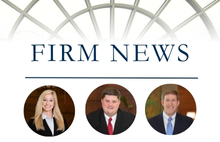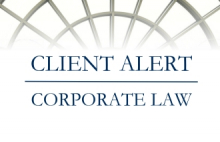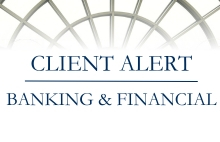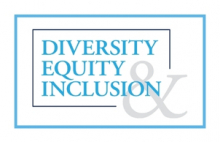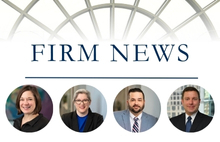IRS Finalizes Opportunity Zone Regulations
February 2020On December 19, 2019, the Internal Revenue Service (IRS) issued long-awaited final regulations (TD 9889) that govern the extent to which tax benefits may be available to those investing in low-income areas that have been designated as qualified opportunity zones (QO Zones). These final regulations adopt, with several taxpayer-favorable modifications, the first two sets of proposed regulations that were released in October 2018 and April 2019. This client alert summarizes key provisions in the final regulations. A more detailed discussion of these provisions can be found in Part II of this client alert.
Overview of the Opportunity Zone Program
The QO Zone program was created in 2017 as part of the Tax Cuts and Jobs Act (TCJA) to provide tax incentives for investments and developments in QO Zones. The tax benefits associated with investing in QO Zones are available only to the extent that the investments are made through a qualified opportunity fund (QOF).
Investors whose realized capital gain is placed in a QOF so as to constitute a "qualifying investment" can elect to obtain three major tax benefits:
- Deferral of recognition of capital gains until the earlier of (i) the date on which the interest in the QOF is sold, or (ii) December 31, 2026, so long as an amount equal to the capital gain is invested in a QOF within 180 days of the sale generating the capital gain (the “Deferred Gain”).
- Permanent exclusion of 10% of the Deferred Gain if the investment in the QOF is held for 5 years, and permanent exclusion of 15% of the Deferred Gain if the investment in the QOF is held for 7 years.
- Permanent exclusion of the entire gain on the sale of a qualifying investment in a QOF if the investment in the QOF is held for at least 10 years.
For background on the QO Zone program and the first set of proposed regulations, please see our prior alert. A summary of the key provisions of the second set of proposed regulations can be found in a different prior alert.
Top Provisions in the Final Regulations
The following is a brief summary of the key developments in the final regulations.
- Gross Section 1231 Gains are Eligible for Deferral – Investment of gross Section 1231 gains in a QOF may be treated as Deferred Gains. This treatment generally requires that the investment be made within 180 days from the date that the Section 1231 property is sold.
- Installment Sale Gain from a pre-TCJA Transaction as a Qualifying Investment – Taxpayers may defer capital gain realized with respect to an installment sale, even if the initial sale occurred prior to 2018. The taxpayer can elect to either (1) have a separate 180-day period for each payment received during the year, or (2) have the 180-day period for all installment amounts received during the year start on the last day of the tax year.
- Timing of Investment in a QOF for Gains from a Pass-through Entity – For capital gain allocated to a partner in a partnership, the partner may elect to have the 180-day reinvestment period begin on (1) the date of the sale that generated the capital gain, (2) the last day of the partnership tax year, or (3) the due date of the partnership tax return (without extensions). A similar rule also applies for S corporation shareholders. This rule provides partners and S corporation shareholders with significant flexibility in making investments in a QOF.
- Acquisition of an Eligible Interest in a QOF from a Third Party – A QOF interest purchased from a QOF owner can be treated as an eligible interest, even if the transferor did not make a deferral election. For interests in entities that existed prior to the TCJA, if such entities later become QOFs, then the interests in those entities, even though not qualifying investments in the hands of the transferor, are eligible interests that may (i) be acquired by an investor, and (ii) result in a qualifying investment of the acquirer if the acquirer has eligible gain and the acquisition was during the 180-day period with respect to that gain.
- Additional Events Causing Inclusion of Deferred Gain – The final regulations list additional inclusion events (i.e., events that reduce an eligible taxpayer's direct equity interest in a QOF) such as (1) the loss of QOF status (either through voluntary self-decertification or involuntary decertification), (2) an entity classification change of a QOF under the check-the-box rules (i.e., a change in tax status from a partnership to a corporation or vice versa), and (3) a transfer to a spouse incident to divorce.
- Additional Deferral of Previously Invested Gains – Gain arising from an inclusion event is eligible for deferral, even if the taxpayer retains a portion of its qualifying investment after the inclusion event. If a taxpayer disposes of its entire interest in a QOF, the gain recognized from the inclusion event can be invested either in the original QOF or in a different QOF if a timely deferral election is made. If the taxpayer disposes of only a portion of its interest in a QOF, the gain recognized can be deferred only by investment in a different QOF. Although the preamble to the final regulations suggests that the gain can be reinvested only in a different QOF, the example in the final regulations (in which the taxpayer disposes of its entire interest in the QOF) provides that the proceeds can be reinvested in the original QOF as well.
- QOF Basis Rules for Inherited QOF Interests – The death of a QOF interest holder is not an inclusion event. However, the final regulations provide that Section 1014, which would adjust the basis of an inherited asset to its fair market value as of the date of the deceased owner’s death, does not apply in this case. For a non-qualifying investment (one that does not qualify for deferral), the recipient’s basis in the non-qualifying investment on the death of the owner is governed by Section 1014.
- Tax Rate on Deferred Gain When Recognized – The Deferred Gain is subject to tax at the applicable federal income tax rates in effect for the year of inclusion, not the year of deferral. Investors seeking to defer gain must consider the possibility that the tax rates on capital gains in 2026 (or on the date an inclusion event occurs) could be higher than the 23.8% (20% capital gains rate plus 3.8% net investment income tax rate) maximum rate currently imposed.
- Creation of New Working Capital Safe Harbor for Startup Businesses – The final regulations create a new 62-month safe harbor for taxpayers investing in startup businesses within a QO Zone, provided that the startup business receives multiple rounds of cash infusions during the startup phase. The working capital safe harbor cannot be extended beyond 62 months from the date of the first cash infusion, regardless of how many rounds of financing the business receives. Each overlapping or sequential application of the working capital safe harbor must include a substantial amount of working capital assets.
- De Minimis Sin Businesses Permitted – The final regulations permit a QO Zone business (QOZB) to lease up to 5% of its property to any of the prohibited “sin businesses,” which include golf courses, country clubs, massage parlors, hot tub facilities, tanning salons, racetracks, gambling facilities, and liquor stores.
- Shortened Vacancy Period Satisfies the Original Use Test – Qualifying property of a QOF or QOZB must either (1) have its original use commence in the QO Zone, or (2) be substantially improved. The proposed regulations required vacancy for 5 years to qualify as original use property. The final regulations provide that property that has been vacant for 3 years, and in some cases 1 year, can qualify as having its original use commence in the QO Zone.
- Brownfield Sites Meet Original Use Requirement – Real property (including land and structures) purchased in a brownfield site (property where the expansion, redevelopment, or reuse may be complicated by the presence or potential presence of a hazardous substance, pollutant, or contaminant) satisfies the original use requirement if, within a reasonable period, the QOF or QOZB makes investments in the brownfield site to ensure that all property meets basic safety standards for both human health and the environment. In addition, remediation is taken into account for purposes of determining whether the land has been more than minimally improved.
- Substantial Improvement – Although the proposed regulations provided an asset-by-asset approach for determining whether the substantial improvement test has been met, the final regulations permit certain assets to be aggregated in some situations. Additionally, the cost of certain purchased property can be added to the basis of non-original use assets, for satisfying the substantial improvement requirement.
- Decertification as a QOF – The final regulations provide a voluntary self-decertification process, but they do not provide a definitive answer as to when the frequent and repeated failure to maintain 90% of its assets as qualified opportunity zone property prevents the entity from qualifying as a QOF, which would eliminate potential tax benefits for investors.
- Additional Flexibility for the Permanent Exclusion of Gain on Asset Sales – The final regulations permit an investor who has held a qualifying investment in a QOF for 10 years to exclude all gain from the sale of all assets held by a QOF or QOZB, except for gain arising from the sale of inventory in the ordinary course of business. This broadened exclusion means that all other types of income, such as depreciation recapture, certain distributions, and gain from the sale of other assets that are not qualified opportunity zone business property, can also be excluded.
If you have any questions regarding Qualified Opportunity Zones or the impact of the final regulations, please contact one of our tax or real estate attorneys.

